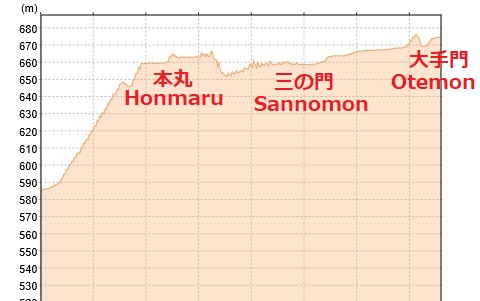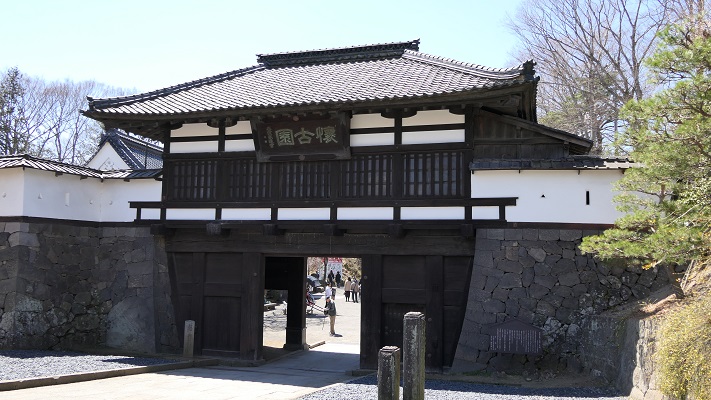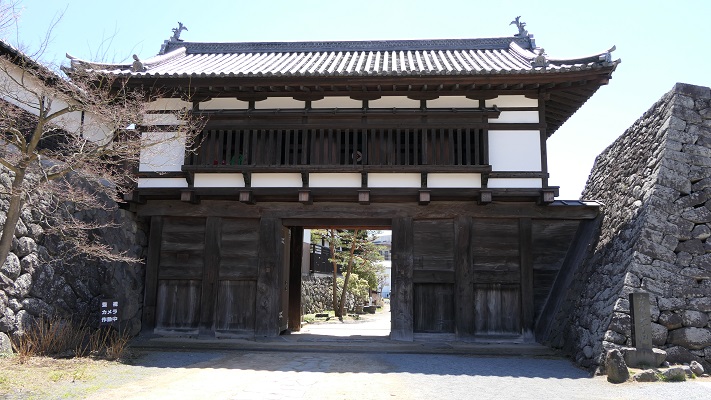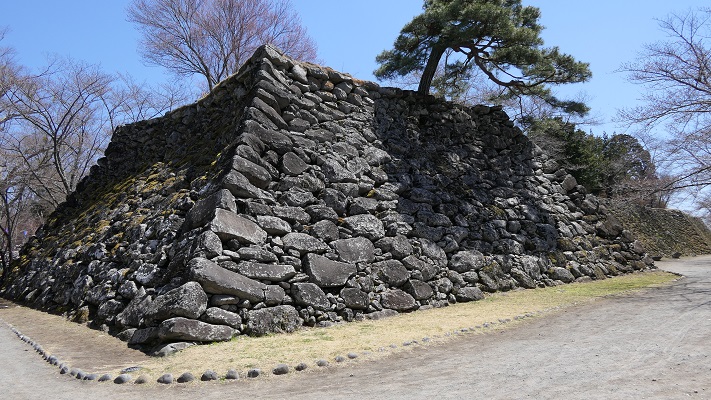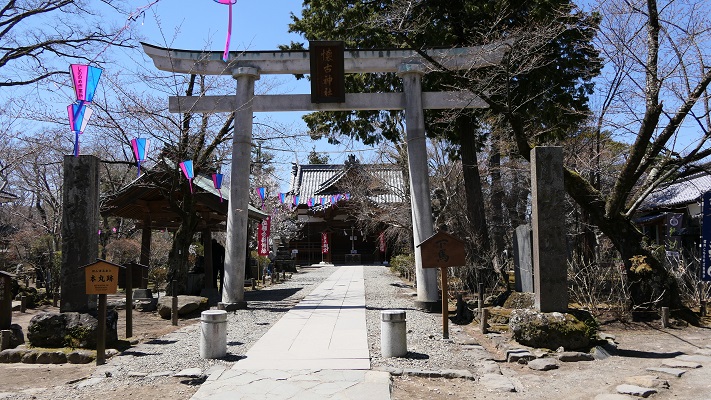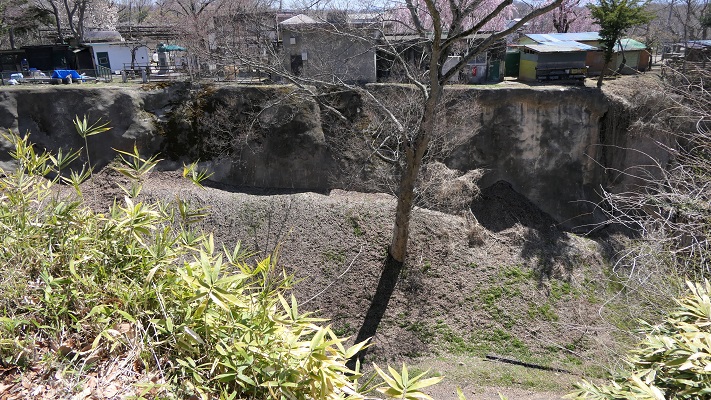Location and History
上田城は、長野県上田市の最も有名なシンボルの一つです。この城は真田氏によって築城されました。城に向かう道すがら、真田の旗印である「六文銭」(三途の川の渡し賃の意味)がたくさん目に入ってきます。
The Ueda castle is one of the most famous symbols of Ueda city in Nagano prefecture. The castle was founded by the Sanada clan. You can see a lot of Sanada’s flag of “Rokumonsen” (six one-mon coins), which is the fee for crossing the Styx, which is beside the castle.
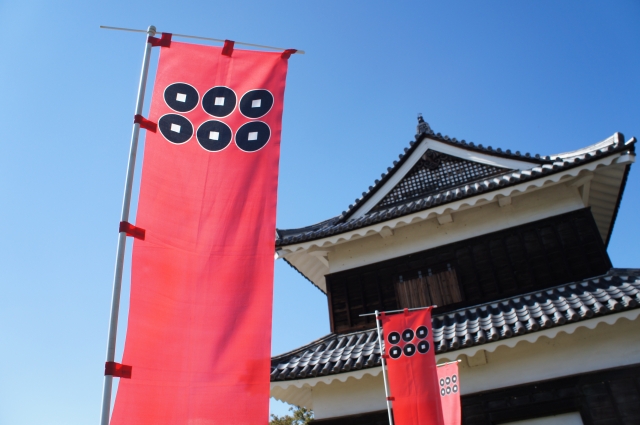
戦国時代後期の大名、真田昌幸が1583年に最初に上田城を築きました。彼は、真田一族の独立を意図し、後に幕府を開くことになる徳川氏に反抗しました。徳川は2回この真田の城を攻めたのですが、真田は負けませんでした。特に、1600年の天下分け目の合戦の中で行われた2回目の戦いがよく知られています。それ以来、真田とこの城が有名になったのです。徳川は激怒し、天下を取った後この城を完全に破壊させました。
Masayuki Sanada, a lord in the late Civil war period first built Ueda castle in 1583. He aimed to make his clan more independent against the Tokugawa clan which would become the Shogunate. Tokugawa attacked the Sanada castle twice, but they couldn’t be defeated. The second one was particularly a well-known battle among the fateful battles in 1600. That had made Sanada and this castle famous from then on. However, Tokugawa was so angry that they ordered to have the castle completely destroyed after the clan came to power.

結果的として実は、真田の城がどんなだったかはわからないのです。江戸時代になって、仙石忠政が上田藩の藩主として移封されてきたとき、城の再建を許可されました。忠政は真田の城を再現しようとしたのですが、それを果たす前に亡くなってしまいました。今、私たちが目にしているのは、忠政によって残された土木建築の一部なのです。
As a result, in fact, the structure of Sanada’s castle is uncertain. In the Edo period, when Tadamasa Sengoku was transferred to the lord of the feudal domain of Ueda, he was allowed to rebuild the castle. He tried to recreate the Sanada castle, but he died before it had done. Now we can see part of the remaining buildings and constructions made by Sengoku.
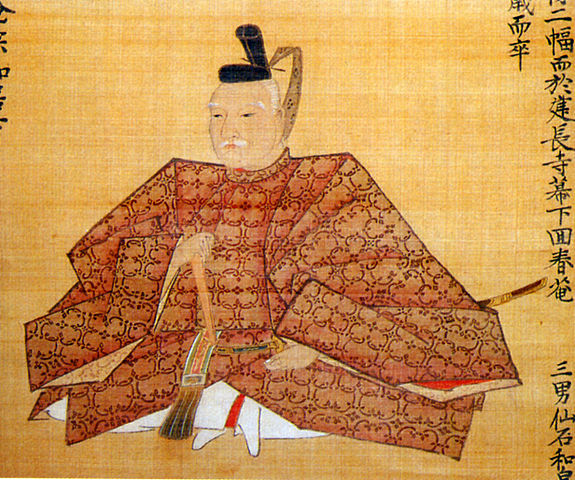
Features
現在、「本丸」とそこにある3棟の「櫓」の建物、そして「二の丸」が残っています。本丸は高く盛られていて、北・東・西の三方向を水堀と二の丸によって囲まれています。過去においては、その三方向の外側が更に川と湿地帯よって守られていました。
Now, the main enclosure “Honmaru” with the buildings of three turrets “Yagura” and the second enclosure “Ninomaru” remains. Honmaru is highly elevated and it is surrounded by a water moat and Ninomaru in north, east and west directions. In the past, the outside of the three directions were also protected by rivers and waterlogged areas.
最新の城周辺地図(The latest map around the castle)
本丸の南の方は、急崖による天然の要害になっていて、現在でも見ることができます。更には、「尼ヶ淵」という今は干上がっている沼沢があり、崖に沿って流れている千曲川につながっていました。それも障壁だったのです。
The south of it has natural hazard with a steep cliff which can be seen today. In addition, a pool called “Amagafuchi” which drys up now, connected to the Chikuma River that flows alongside the cliff. it was another hazard.
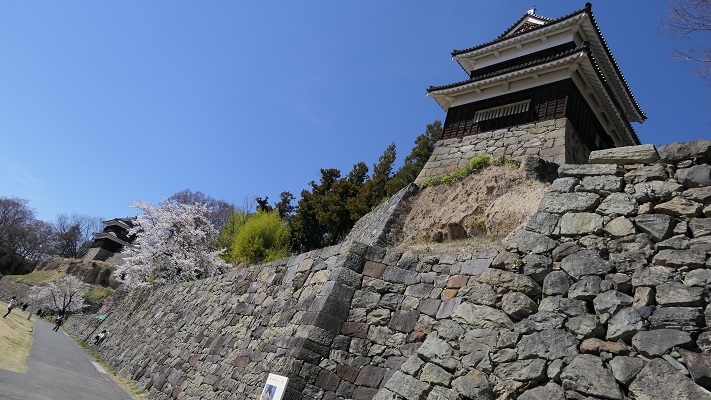
(’19-9-10 追記 added)
上田城に天守があったかどうかははっきりしません。「武家事記」という古書では初期の上田城のことを「天守も無き小城」と述べている一方、江戸時代の寛政年間の古地図には「御天守跡」との記載があります。よって歴史家の意見は分かれていました。しかし最近になって本丸の辺りから、天守で使われたような金箔瓦が出土したのです。現在、多くの歴史家は天守か、それに準ずる豪華な櫓があったのではないかと考えています。
It is uncertain whether Ueda Castle had the keep “Tenshu” or not. While an old book “Buke-Jiki” calls the early castle “A small castle even without the Tenshu”, another old map in the Kanei Eea, Edo peried records “The ruin of the Tenshu”. So historians’ opinion remained devided. But, recently an old roof tile with gold leaf that might have been used for Tenshu was excavated from the Honmaru area. Now, many historians think the castle had the Tenshu or a similar luxury turret “Yagura”.
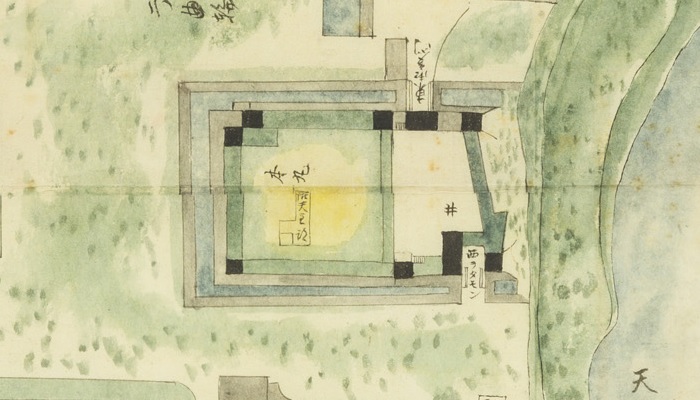
Later Life
明治維新の後、2つの櫓が売られていき、遊郭の建物として使用されました。最悪の時には、たった一つの櫓(西櫓)を残すのみとなり、他は撤去されてしまいました。
After the Meiji restoration, two of those turrets were sold and used as Geisha houses. At the worst time, only one turret (the West Yagura) remained and the others were removed.
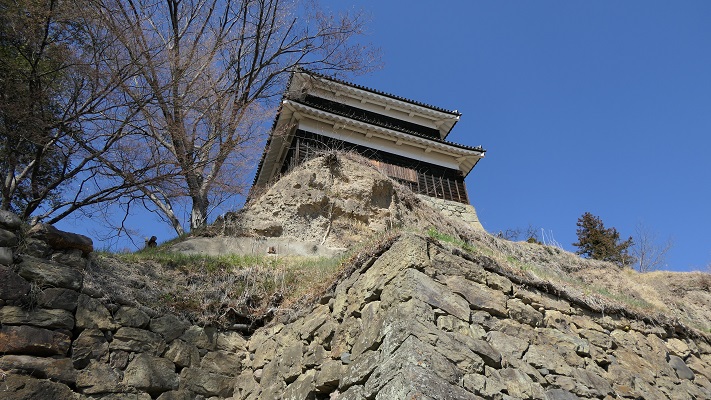
第二次世界大戦後、市民たちは売られた2つの櫓を買い戻すことに成功し、元あった場所に据え付け直しました(北櫓と南櫓)。最近になって、東虎口櫓門と袖塀が忠実に復元され、北と南の櫓をつなぎました。この辺りの外観が、昔ながらの姿に正確に再現されたことで、絶好の写真スポットになっています。
After the World War II, citizens were successful to get the bought turrets back and placed them to their original positions (the North and South Yagura). Recently, the East entrance gate and side walls were rebuilt in the original way connecting the north and south Yagura. Their appearance has become an accurate representation of the past, and has become a good photo spot.
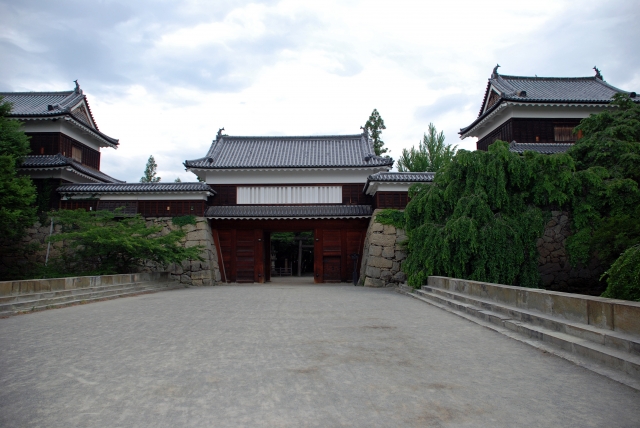
My Impression
先ほど申し上げました通り、真田の城そのものは現在見ることはできません。しかし、後に続いた城主仙石忠政は、英雄である真田にちなんで築城できないかどうかと考えたのではないでしょうか。だから真田の城の思想は、忠政の城に引き継がれていると思うのです。それが正しければ、今現在存在する城を見て、真田の城がどうあったかというのも理解できるはずです。
As mentioned above, we can’t see the structure of Sanada’s castle. But I imagine that the following lord Sengoku was wondering if he could build his castle after the brave Sanada. So I think the idea behind Sanada’s castle could led to the castle by Sengoku. If that was true, we can understand how Sanada created their castle by examining the castle now.
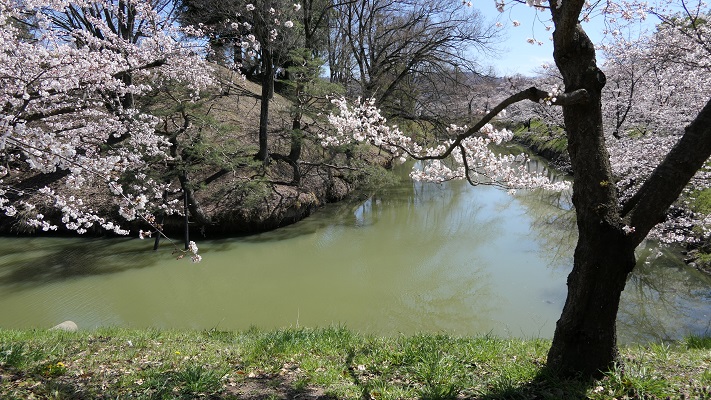
この城は、高低差、自然の要害、人口の構築物をうまく使って、少ない兵で敵から守れるようコンパクトに作られたのだと言えます。
I can say the castle was made compact to prevent enemies with a small number of soldiers, using different elevations, natural hazard, and artificial structures.
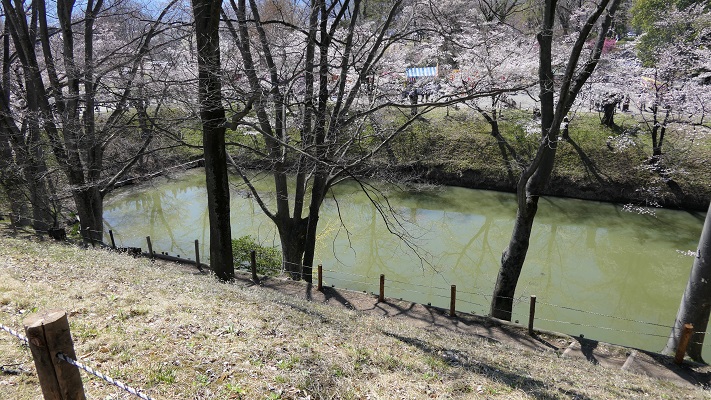
南面の崖に行ってみて、崖の崩壊を防ぐため各時代に作られた様々な石垣を見てみるのもおすすめです。
I recommend you see the south side cliff where you can also find many kinds of stone walls to prevent the cliff from collapsing in different times.
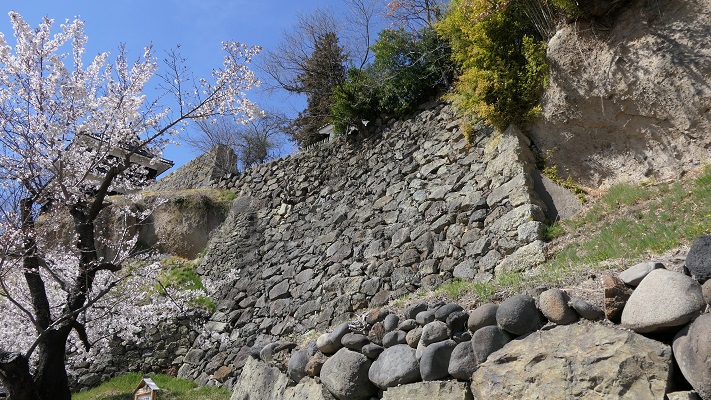
How to get There
上田駅から歩いて15分くらいです。
東京から上田までは、直通の北陸新幹線があります。
It takes about 15 minutes on foot from the Ueda train station.
There is a direct train from Tokyo to Ueda via the Hokuriku Shinkansen super express.
Links and References
・上田城・上田城跡公園~信州上田観光協会(Uedajo Castle~Ueda City Tourism Association)

